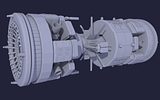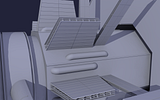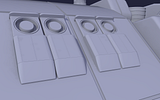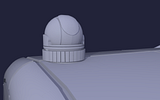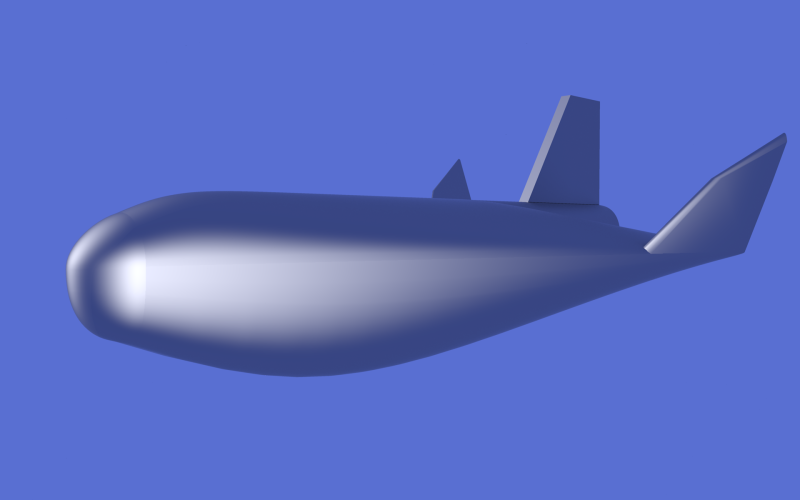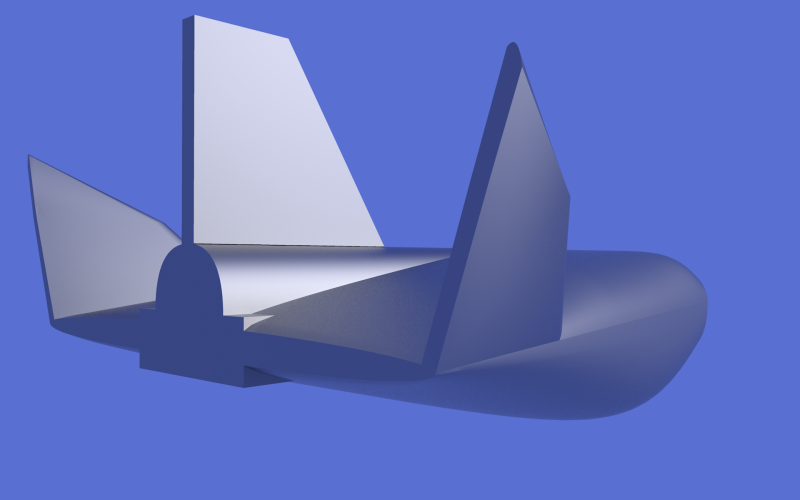Heya,
OK, what we have today is a ship from my personal fiction setting.
This ship is the first cruiser commissioned by the United Earth Government. This ship was rushed into service in response to piracy attacks on the first colony ships sent out. Interstellar travel is in it's infancy at this stage with few ships capable of making the months long voyages to the nearest stars.
The main propulsion in this setting is through the use of gravity well generators. This particular ship has a gravwell drive fore and aft (the big ring assembles). it uses these with the front creating a standard gravity well infront of the ship, In essence pulling the ship, while the second unit at the aft produces a "negative" gravity well to push the ship along. You may be wondering why the ship would need units fore and aft for this travel mode? Well, it doesn't. The real need for two gravwell units is to achieve FTL travel. When a ship reaches the outer reaches of a solar system far enough from any natural gravity wells, two drive units can be used in concert to "drop" the ship into a type of "hyperspace". The more power that can be thrown at the engines to make the transition, the faster the travel speed of the ship. This makes for the largest ships being the fastest between stars.
The UNS Federation (name subject to change) pictured here was a rush development as stated. A colony supply ship under construction was modified by removing most of it's cargo space, shortening the space frame to improve spin radius, adding more power plants, manuevering tankage, and of course, weapons systems.
The resulting ship is the fastest FTL ship of her time with 8 Polywell fusion reactors (4 per grav engine). The armament includes long range lasers, point defense rapid fire railguns, and intermediate range missiles.
What I have completed so far in the images is the main space frame, the grav engines, the polywell fusion engines (they are also used as heavy maneuvering thrusters in combat) fuel tankage, and the centrifugal gravity living quarters. Yes, although artificial gravity wells are used for propulsion, the technology as yet in the setting does not allow for artificial gravity "deckplating". Thus this ship has the living quarters mounted on booms that spin for gravity when the ship is not underway. (the 2 sets of booms counter rotate) When underway the typical policy is to run the grav drives at 1g acceleration at all times to provide gravity. The living quarters are then rotated out so that the "floor" is perpendicular to the direction of travel.
Yet to be added to the ship: weapons systems, heat radiators, communications, Hanger facilities.
To get an idea of the size, in the close up image, you can see the pod style habitat units on the booms. There are 3 levels of pods with each pod being one deck high.
All images are clay model. The first image I added a background image and glow to the grav engine, just for fun.

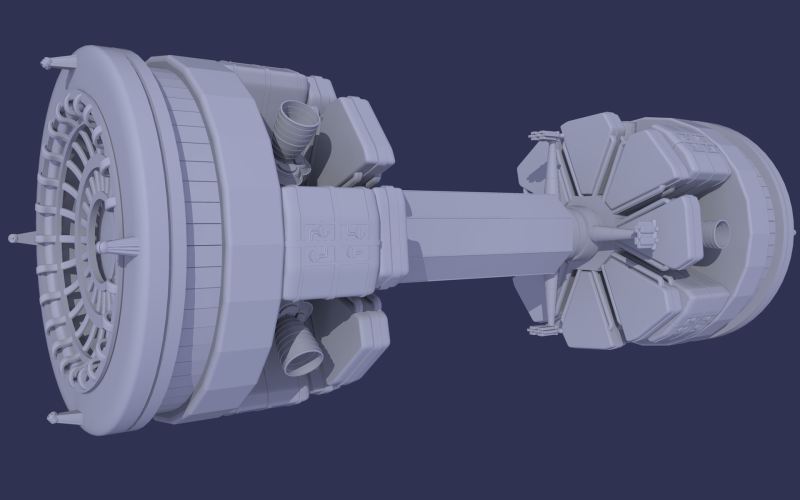
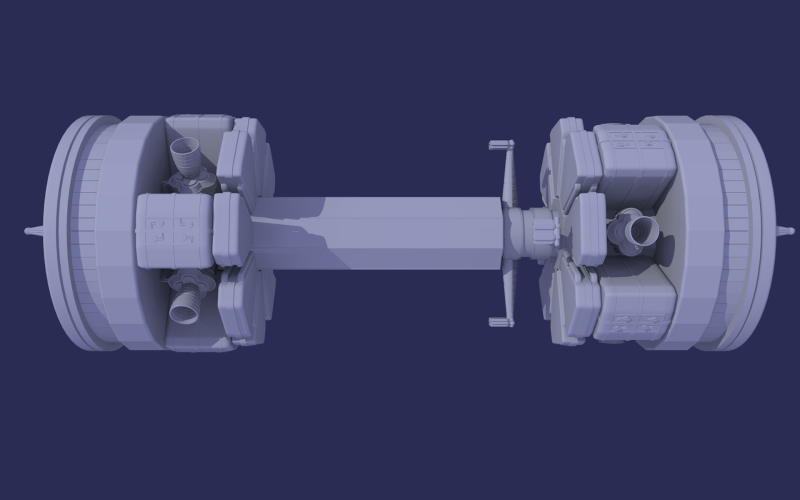
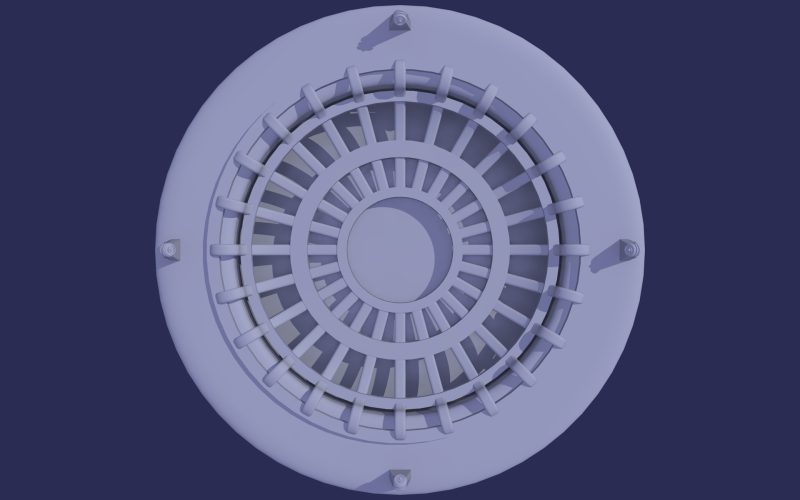
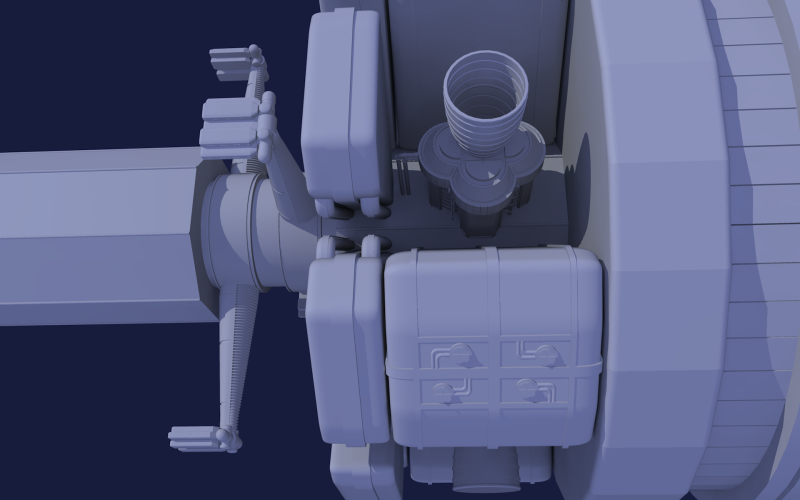
OK, what we have today is a ship from my personal fiction setting.
This ship is the first cruiser commissioned by the United Earth Government. This ship was rushed into service in response to piracy attacks on the first colony ships sent out. Interstellar travel is in it's infancy at this stage with few ships capable of making the months long voyages to the nearest stars.
The main propulsion in this setting is through the use of gravity well generators. This particular ship has a gravwell drive fore and aft (the big ring assembles). it uses these with the front creating a standard gravity well infront of the ship, In essence pulling the ship, while the second unit at the aft produces a "negative" gravity well to push the ship along. You may be wondering why the ship would need units fore and aft for this travel mode? Well, it doesn't. The real need for two gravwell units is to achieve FTL travel. When a ship reaches the outer reaches of a solar system far enough from any natural gravity wells, two drive units can be used in concert to "drop" the ship into a type of "hyperspace". The more power that can be thrown at the engines to make the transition, the faster the travel speed of the ship. This makes for the largest ships being the fastest between stars.
The UNS Federation (name subject to change) pictured here was a rush development as stated. A colony supply ship under construction was modified by removing most of it's cargo space, shortening the space frame to improve spin radius, adding more power plants, manuevering tankage, and of course, weapons systems.
The resulting ship is the fastest FTL ship of her time with 8 Polywell fusion reactors (4 per grav engine). The armament includes long range lasers, point defense rapid fire railguns, and intermediate range missiles.
What I have completed so far in the images is the main space frame, the grav engines, the polywell fusion engines (they are also used as heavy maneuvering thrusters in combat) fuel tankage, and the centrifugal gravity living quarters. Yes, although artificial gravity wells are used for propulsion, the technology as yet in the setting does not allow for artificial gravity "deckplating". Thus this ship has the living quarters mounted on booms that spin for gravity when the ship is not underway. (the 2 sets of booms counter rotate) When underway the typical policy is to run the grav drives at 1g acceleration at all times to provide gravity. The living quarters are then rotated out so that the "floor" is perpendicular to the direction of travel.
Yet to be added to the ship: weapons systems, heat radiators, communications, Hanger facilities.
To get an idea of the size, in the close up image, you can see the pod style habitat units on the booms. There are 3 levels of pods with each pod being one deck high.
All images are clay model. The first image I added a background image and glow to the grav engine, just for fun.








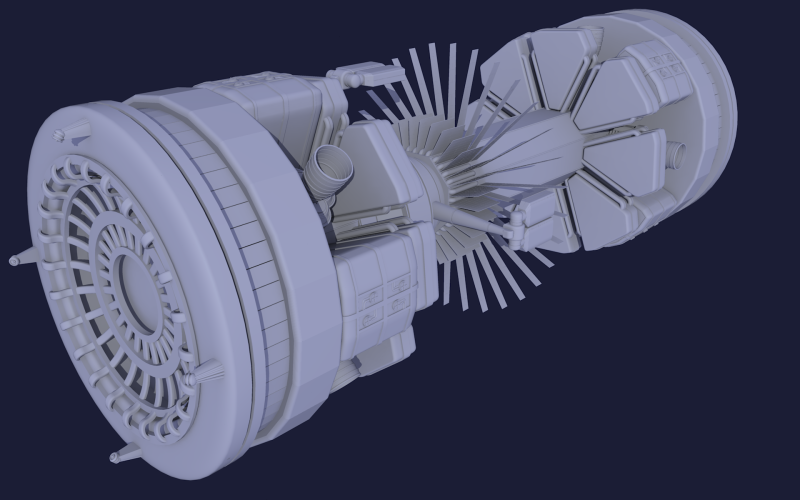
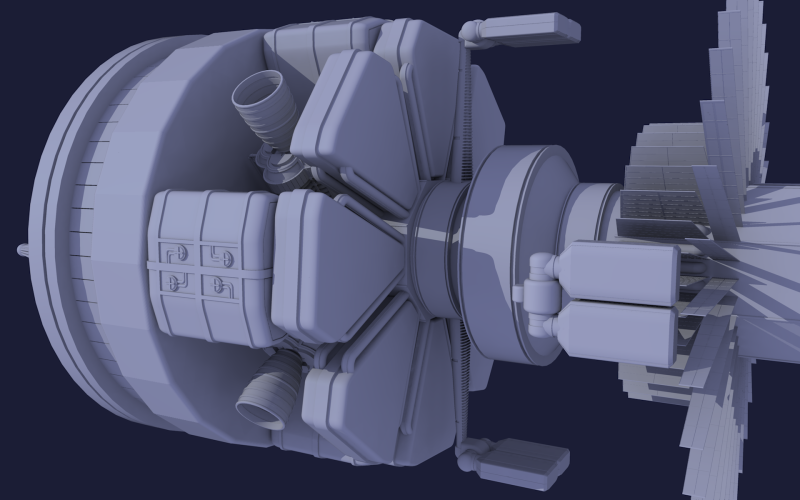
 Does it have a shuttlebay / hangar deck? I'm guessing these guys have to use shuttles to get on and off, right?
Does it have a shuttlebay / hangar deck? I'm guessing these guys have to use shuttles to get on and off, right?
